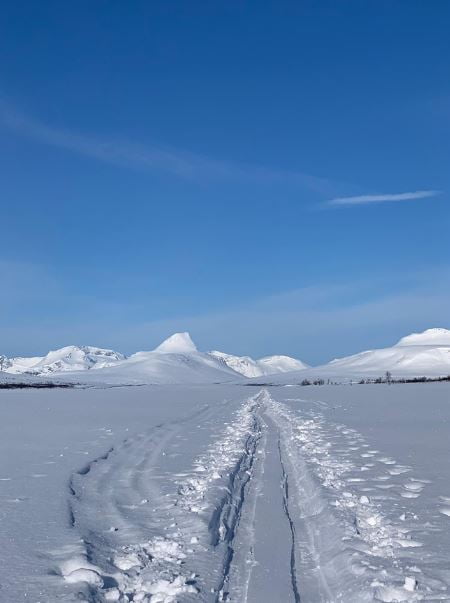Arctic Tundra 4
Arctic Tundra
Tree-less and often bitterly cold, the Arctic tundra is an ecosystem of great beauty and abundance, shaped by the dramatic seasons in the far north. It is a very fragile environment, and the plants and animals that make up its biome make it its home. Many people love the extremes and adventures of the Arctic Tundra environment, but a trip to the far north is one that will never be forgotten!

Arctic Tundra
As scientists learn more about how climate change affects the tundra’s climate, preserving the ecosystem will help protect this fascinating biome. Indeed, in a much warmer climate, managing a network of Arctic parks to preserve the ecosystem processes that are essential to the survival of Arctic tundra and its biodiversity may be the only way to preserve Arctic terrestrial biodiversity in the future.
Join us on our 3 Countries Expedition allows you to be immersed in this stunning environment.
The remarkable animals of the Arctic tundra include polar bears, polar bears, foxes, wolves, seals, elks and wolves. Characteristic mammals found in the coastal areas of this ecoregion include seals and elk, as well as seals in the Barents Sea, Beaufort Sea and the Siberian Bering Sea. Other Arctic Tundra animals include walruses, bighorn sheep, peregrine falcons, musk oxen, mules, coyotes, elks, lynxes, bears and other wildlife.

Arctic Tundra 3 Countries Ski Expedition
The Arctic tundra is home to caribou and reindeer, which feed on lichens and plants as well as other animals such as polar bears. The insects, abundant in summer, provide food for thousands of migratory birds, and lichens provide shelter and shelter for many bird species in winter.
These animals have adapted to the cold, harsh conditions of the tundra, and most migrate and hibernate to survive the brutal Arctic winters. The summer season is incredibly short, so it is important that the plants make the most of the sun. They do this by growing only during the summer months, the only time when it is not biologically impossible to grow because it is not cold. There are only 50 to 60 days a year when plants grow, but these summer months are very short, so the plants have only a few days of sun and a limited time for it.
The Arctic tundra is a suitable habitat for animals and plants because the short period of two months is not short enough to hibernate the animals. Although the Tundra biome has animal populations, they are not consistent all year round due to the extreme cold and lack of sun.

Arctic Tundra Landscape
The soil of the Arctic tundra is swampy and swampy in summer, so plants must be able to survive in water – deforested areas. This makes the bear grape an ideal tundra plant in the Arctic, as it lives in a dry, extreme climate without nutrients and soil.
The center of the Arctic tundra is experiencing a pattern of freezing and thawing, with enough moisture to promote sphagnum moss. Plants that stretch their roots deep into the ground cannot grow in permafrost. Swamps and bogs cover most of the Arctic tundra, turning solid, frozen soil into soggy, melted soils.
The Arctic tundra biome is located in the northern hemisphere, with winter temperatures averaging 10-15 degrees Celsius and summer temperatures of -40-35 degrees Celsius. The climate is relatively dry and a large part of it is covered only by an active layer of permafrost that dries out during the growing season. It drops about 10 inches of rainfall a year, about as much as the rest of the U.S. Arctic.
Although it is much colder than the Arctic, the ground is always covered in snow and ice and is a great source of food for animals such as whales, seals and polar bears. Small tundras – such as those found in Antarctica in the southern hemisphere – exist, but they lack large mammalian fauna. There are no faunas of large mammals in Antarctica. Nor are there large numbers of small birds and small mammals. The tundra of Antarctica is also very cold with temperatures of -40 to 35 degrees Celsius.
Cited Sources
Source 1, Source 2, Source 3, Source 4, Source 5, Source 6, Source 6, Source 7, Source 8, Source 9, Source 10, Source 11, Source 12, Source 13, Source 14, Source 15, Source 16, Source 17




